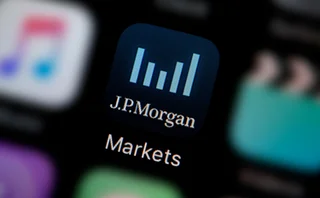
Collateral or settlement: capital cut rests on role of VM
Questions about status of variation margin are more than semantics

How long does a 10-year interest rate swap have left to run, if it was transacted a year ago? It's not a trick question: the answer is nine years.
Now, let's change the question a little: under the terms of the leverage ratio, how long does a cleared 10-year interest rate swap have left to run, if it was transacted a year ago, and is subject to daily variation margin payments?
The answer is not straightforward. It depends whether the variation margin is regarded as collateral, temporarily handed by one party to another as security against default, or is instead seen as a payment to settle the profit-and-loss (P&L) at that point in time. Traditionally, variation margin in the world of bilateral swaps is treated as collateral, while in the futures market it is accounted for as settlement.
So, going back to our 10-year swap that was executed a year ago, the residual maturity would be nine years if variation margin is collateral – according to a leverage ratio footnote – and less than a year if it is settlement.
Nothing else changes. It remains the same transaction with the same risk and the same cashflows, but that one twist – almost a philosophical adjustment – would dramatically reduce the potential future exposure generated by the trade.
It's no surprise, then, that the big swaps clearing houses all believe variation margin counts as settlement. It would cut leverage capital for longer-dated swaps by as much as 25%, according to one bank's estimate.
The problem is that payment of variation margin for both cleared and non-cleared swaps is accompanied by a cashflow going the other way – from receiver to payer – of something called price alignment interest (PAI). At first glance, that makes variation margin look like collateral. As one banker puts it: "If under this new approach, variation margin is realised P&L and you pay that margin to me, why would I pay you interest on what is my money? The reason I pay you interest on it today is because it's your money that you've provided as collateral."
That might be the case in the non-cleared world, clearing houses say, but on cleared trades it should instead be seen as an economic adjustment to ensure the swap functions the same way as a non-cleared trade. Some prefer to call it a convexity adjustment fee.
At this point, a cynic might start to see the whole thing as semantics to validate creative accounting. One source describes as "mischaracterisation" the idea that PAI is a fee. Lawyers and regulators are now being asked to opine on the matter.
Is variation margin settlement of P&L? Is PAI a payment of interest or an economic adjustment? Until recently, those questions were of purely academic interest. Now, potentially billions of dollars of exposure are riding on the answers.
Only users who have a paid subscription or are part of a corporate subscription are able to print or copy content.
To access these options, along with all other subscription benefits, please contact info@risk.net or view our subscription options here: http://subscriptions.risk.net/subscribe
You are currently unable to print this content. Please contact info@risk.net to find out more.
You are currently unable to copy this content. Please contact info@risk.net to find out more.
Copyright Infopro Digital Limited. All rights reserved.
You may share this content using our article tools. Printing this content is for the sole use of the Authorised User (named subscriber), as outlined in our terms and conditions - https://www.infopro-insight.com/terms-conditions/insight-subscriptions/
If you would like to purchase additional rights please email info@risk.net
Copyright Infopro Digital Limited. All rights reserved.
You may share this content using our article tools. Copying this content is for the sole use of the Authorised User (named subscriber), as outlined in our terms and conditions - https://www.infopro-insight.com/terms-conditions/insight-subscriptions/
If you would like to purchase additional rights please email info@risk.net
More on Markets
Credit determinations review proposes independent members
Isda AGM: Linklaters unveils key recommendations for CDS committee overhaul
Saudi Arabia poised to become clean netting jurisdiction
Isda AGM: Netting regulation awaiting final approvals from regulators
Buy side looks to fill talent gap in yen rates trading
Isda AGM: Japan rate rises spark demand for traders; dealers say inexperience could trigger volatility
JP Morgan’s new way to trade FX overlays
Hybrid execution method allows clients to put dealers in competition via a single trading agreement
Pension funds eye 30-year Bunds as swap spread tightens
Long-dated bonds continue to cheapen versus euro swaps, and some think they might fall further
Banks mull whether to stick or twist with SDPs
Fewer providers are going all-in on single-dealer platforms, which may lead to consolidation
Market for ‘orphan’ hedges leaves some borrowers stranded
Companies with private credit loans face punitive costs from banks for often imperfect hedges
Green knights? Banks step into struggling carbon credit markets
Clearer global standards and a new exchange may attract dealer entry, but supply and demand challenges remain
Most read
- Top 10 operational risks for 2024
- Japanese megabanks shun internal models as FRTB bites
- LCH issued highest cash call in more than five years








